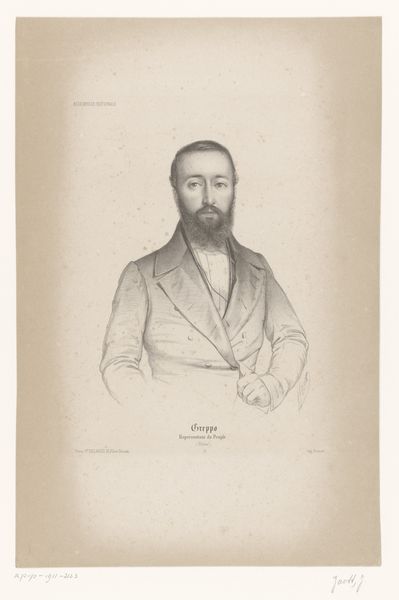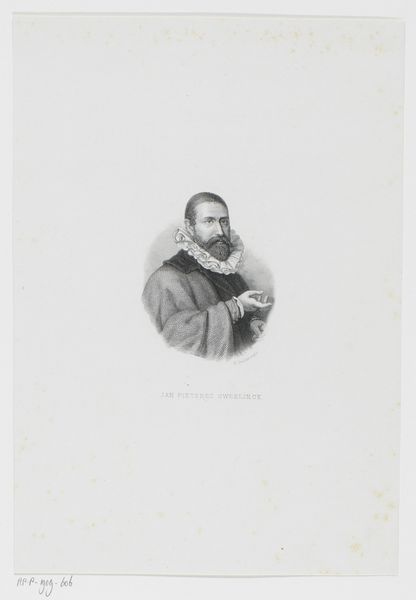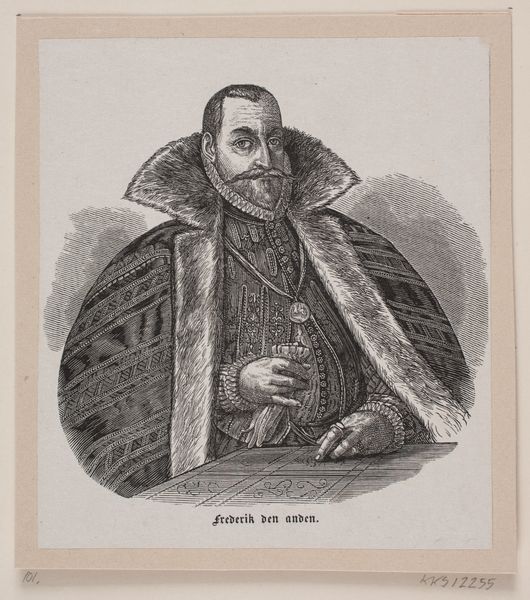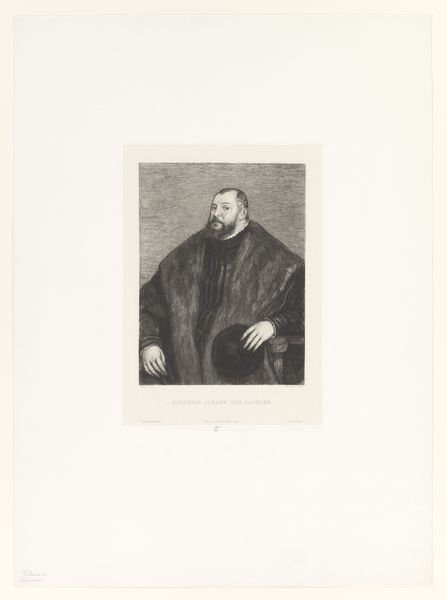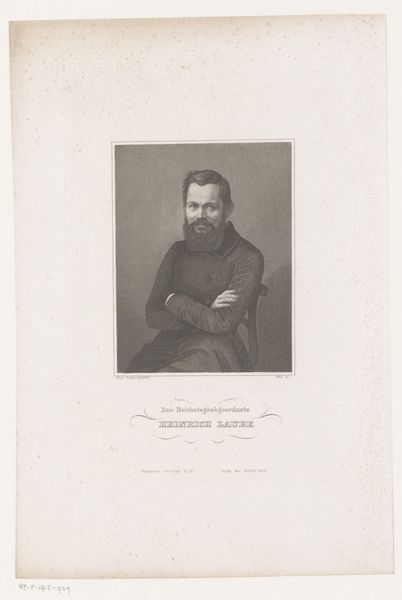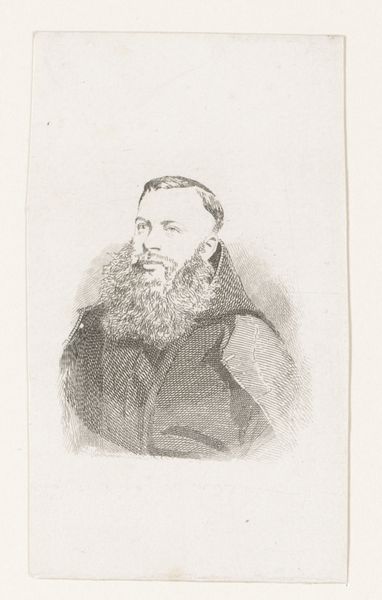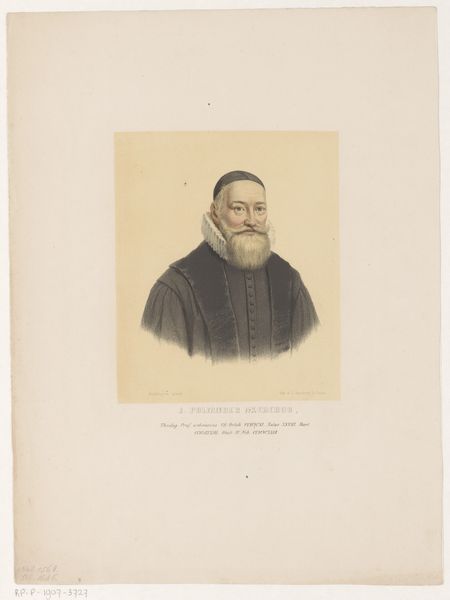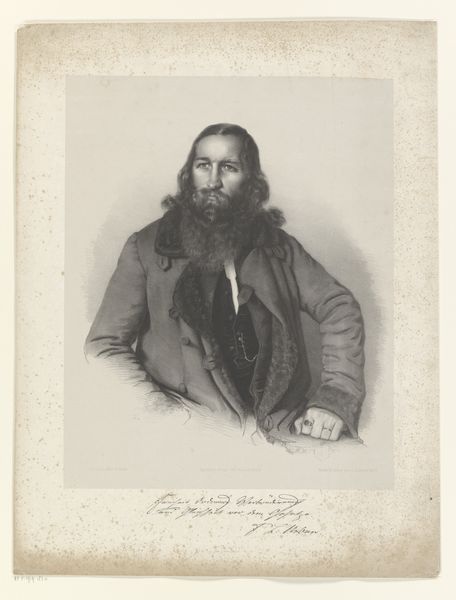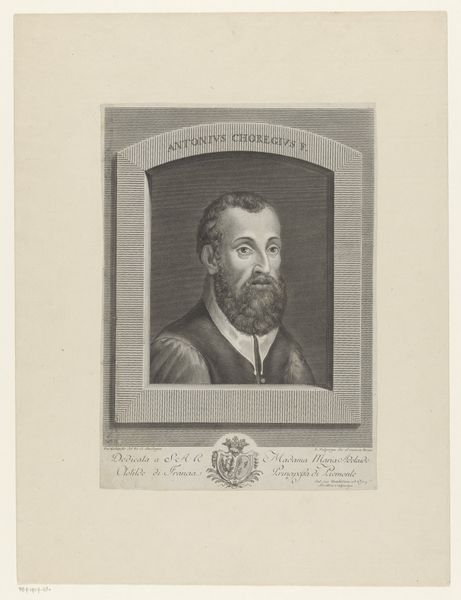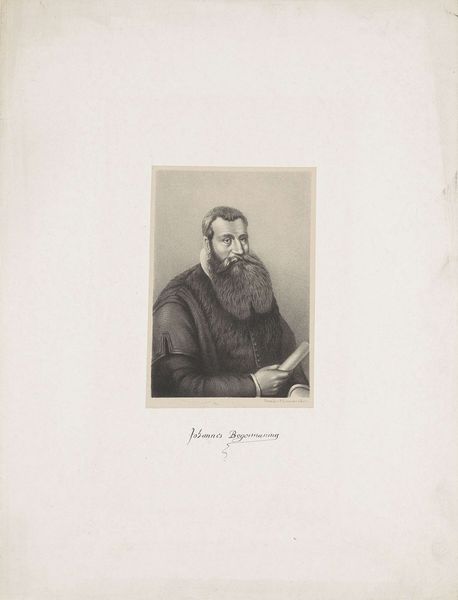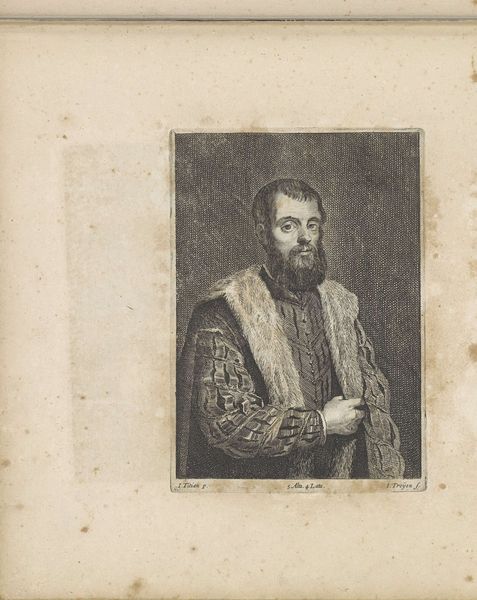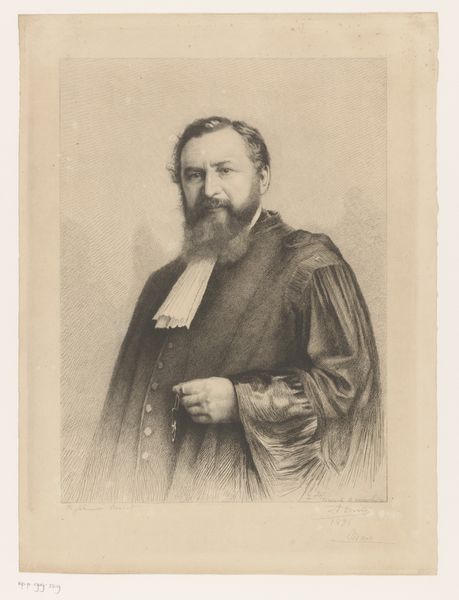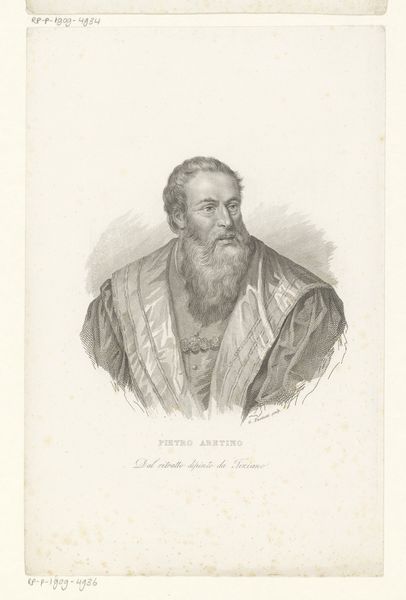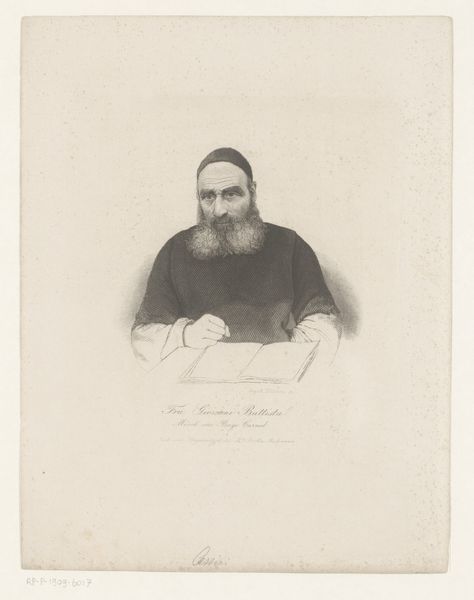
drawing, graphite, engraving
#
portrait
#
drawing
#
pencil drawing
#
graphite
#
engraving
#
realism
Dimensions: height 194 mm, width 142 mm
Copyright: Rijks Museum: Open Domain
Engelhardt Graeff made this portrait of Nicodemus Frischlin in the nineteenth century, using a printmaking technique. It is made of paper and ink, humble materials that allow for widespread reproduction. Note the intricate detail, achieved through careful etching or engraving. Graeff would have used sharp tools to create lines on a metal plate, which was then inked and pressed onto paper. This process demands precision and skill. The contrast between light and shadow, creates depth and volume, bringing Frischlin's face and elaborate ruff to life. Printmaking allowed images and ideas to circulate widely, contributing to the growth of public knowledge and visual culture. This portrait, made through laborious but reproducible means, speaks to the democratizing potential of art in an age of increasing industrialization. The work involved highlights the changing relationship between manual skill, artistic expression, and the means of production. It reminds us that art is not just about the image, but also about the labor and technologies that bring it into being.
Comments
No comments
Be the first to comment and join the conversation on the ultimate creative platform.
